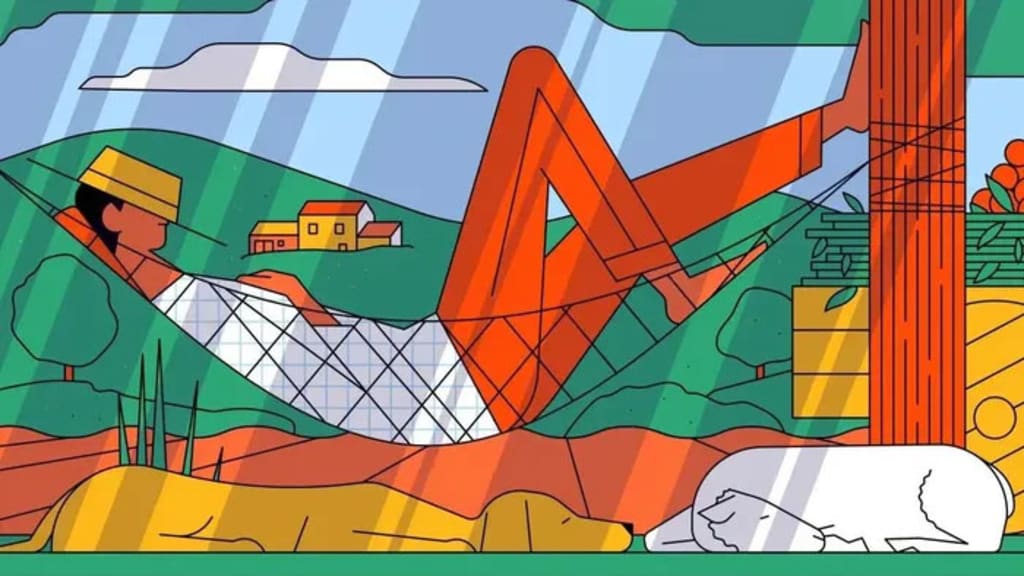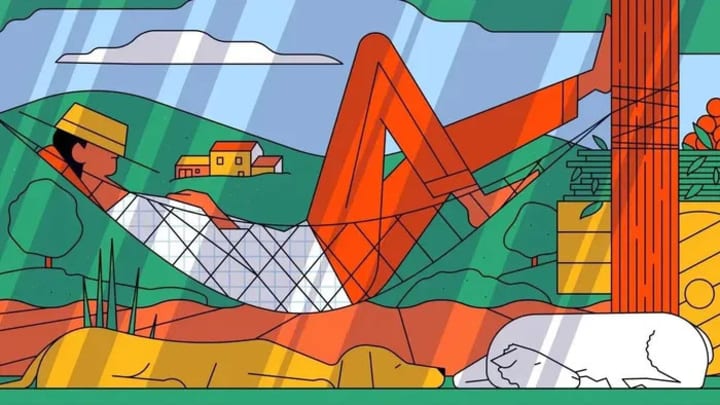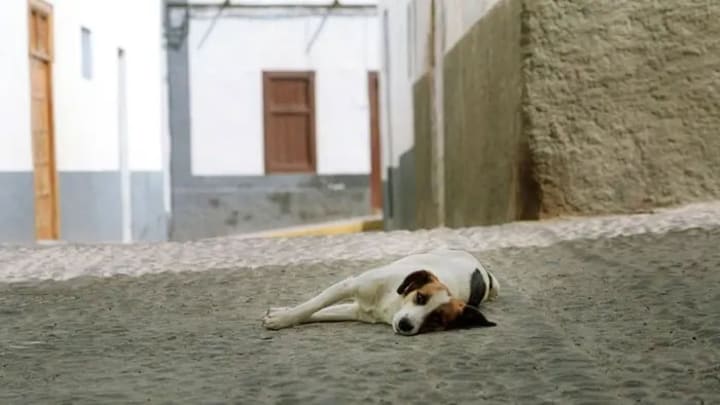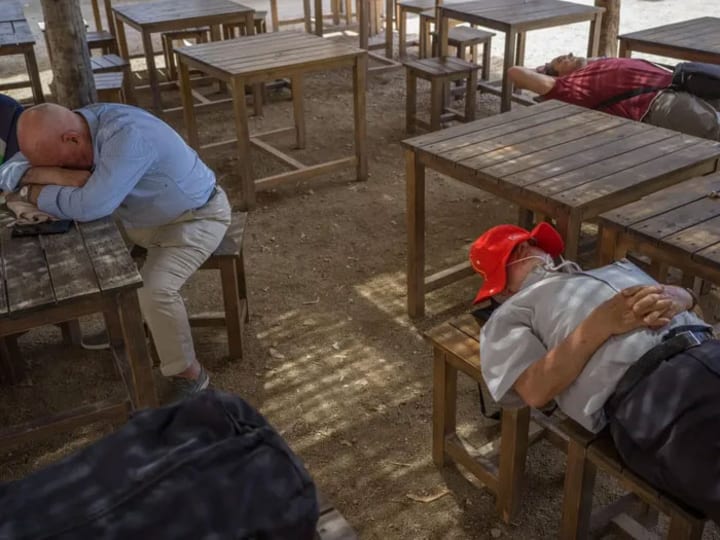It's time for the world to take a nap
It's time for the world to take a nap

As the heat reached 45 degrees Celsius in Greece, security guards and tour guides at the Parthenon went on strike because they were unable to work during the scorching afternoons in Athens.
“Extreme weather conditions cause difficulties for the country. However, the Ministry of Culture has not taken drastic measures to protect workers and visitors,” the Panhellenic Antiquities Protection Staff Union wrote in a press release. The union claimed that many people fainted and suffered heatstroke on the Acropolis (the ruins that include the Parthenon). This is the reason why they go on strike.

In fact, when security guards and tour guides refuse to work during peak heat hours, they essentially help revive an ancient Mediterranean tradition: the lunch break ( siesta).
Napping culture
In the past, Mediterranean people had the habit of eating a lot and taking a short nap at noon. This lifestyle used to be quite popular in Southern European countries such as Greece, Spain and Italy. However, in modern times, people rarely see the appearance of afternoon naps in European countries.
“The afternoon nap appeared before humans existed. Evidence is that many animals are inactive in hot weather or at noon," said Dr. Simon Quilty, a researcher at the Australian National University. Dr. Quilty is the author of a scientific article about cultural changes when temperatures increase.
He said the napping tradition has been criticized in recent years. In 2016, the Spanish prime minister also proposed a policy banning workers from taking naps.

“There is a strong resistance to the longstanding tradition of napping,” Quilty said. “That reflects the change in human values over the past 15-20 years. Issues of money and material benefits are changing culture and, especially, destroying the living environment."
The word “siesta” (siesta) evolved from the Latin phrase sexta hora, meaning the sixth hour after dawn. This is the time when the sun reaches its zenith and it is best for humans to avoid the heat with a hearty meal and a short nap.
Climate change is the cause of temperatures in many countries continuously breaking records. According to analysis by the non-profit organization Climate Central, climate change has caused 98% of people on Earth to live in hotter weather than before.
Even places that don't have the habit of taking a lunch break are considering this solution, especially when the heat becomes more and more severe. A public health organization in Germany, a country famous for its consistently high productivity, has proposed a policy of allowing workers to take lunch breaks to avoid heat-related health problems.
Napping can also be an effective solution to deal with the intense heat in the US, according to José María Martín Olalla, a physics professor at the University of Seville (Spain).
"Allowing workers to take a lunch break means helping them limit work during the hottest time of the day," Olalla said.

However, Spain and America have quite a few differences in culture, especially in terms of working and lunch times. According to Professor Olalla, a nap not only helps workers rest but also signals them that lunch time has arrived.
“For example, in Spain, lunch is the main meal of the day,” Olalla said. “Meanwhile, lunch in America has a less prominent role.”
Napping is quite common in Spanish culture. However, in the process of urbanization, the popularity of napping has gradually decreased. “Nowadays, not all Spaniards take a nap,” said the University of Seville physics professor. However, he says, the extreme heat of climate change is reviving this lifestyle.
200,000 people could die because of the heat
According to a study by Texas A&M University, expected increases in global temperatures will lead to an increase in heat-related deaths. Researchers predict that 200,000 people will die from extreme heat by the end of the 21st century, a five-fold increase compared to the previous century.
According to Mayra Reiter, director of the Occupational Health and Safety program at Farmworker Justice, a nap can limit the negative effects of hot weather for workers, especially those who have to work outdoors. .
“Whether it's a nap or a break in the middle of the workday, workers need it when working in the hot sun,” Reiter said. "Otherwise, they will face the risk of kidney damage due to dehydration, heatstroke, and even death from high temperatures."

In the US, employers have tested many solutions to cope with extreme heat. After a record-breaking hot summer, companies are experimenting with ice vests, sweat patches and paid breaks to help workers stay productive in hot weather.
In the agricultural industry, which requires a lot of time to plant, care for and harvest agricultural products, farmers are switching to harvesting crops at night to avoid the heat of the day.
Dr. Brenda Jacklitsch, a health scientist and heat expert at the American Institute for Occupational Safety and Health, supports the idea of allowing workers, especially those who work outdoors, to nap.
Construction workers are also at risk of death from heat. In 2022, the mother of a construction worker in Texas filed a lawsuit against the contractor for $1 million in compensation after her child died from the heat. The mother believed that the company could have prevented her son from dying if they had provided more measures to cope with the heat.
“You know, midday is the hottest time of the day, when the sun is at its zenith,” Jacklitsch said. "Therefore, the company arranging the heaviest and most stressful work early in the morning or late at night can be a suitable solution to help workers work safely and effectively."
Good signal amid climate change
One of the main effects that napping has on workers is regulating their body temperature. According to Nathan Morris, a professor of environmental physiology at the University of Colorado, napping can help people cool both inside and out.
The idea of adapting to rather than resisting extreme heat may run counter to American work culture. However, according to Dr. Quilty, indigenous traditions and cultures in tropical regions always respond quite well to the dangers of extreme temperatures.
"People should simply understand that hot weather is very dangerous," he said.
According to Norman Frank Jurrula, a colleague of Quilty's who studies how indigenous people adapt to climate change, napping is an example of how humans respond to hot weather. Another response, he said, is for people to pay attention to drought conditions and move to places with more stable water sources.

However, a limitation of Quilty and Jurrula's study is that it only uses data from the past instead of viewing climate change as a contemporary issue. In fact, this problem is increasing the world's temperature to the point where humans cannot survive.
According to Professor Olalla, the good sign is that people are trying to adapt to this. The habit of napping has begun to appear in the US - a country famous for deaths due to overwork, skipping meals and sleeping to work.
“By the way, when I received the email inviting me for an interview, I was taking a nap,” Olalla said in the interview to demonstrate the lasting power of napping.
About the Creator
Ken Daklak
Telling stories my heart needs to tell <3 life is a journey, not a competition
If you like what you read, feel free to leave a tip,I would love some feedback
https://s.shopee.vn/pa9mXcwE?share_channel_code=8
Enjoyed the story? Support the Creator.
Subscribe for free to receive all their stories in your feed. You could also pledge your support or give them a one-off tip, letting them know you appreciate their work.
Reader insights
Outstanding
Excellent work. Looking forward to reading more!
Top insight
Easy to read and follow
Well-structured & engaging content






Comments (1)
Interesting and delicious content. Keep posting more now.